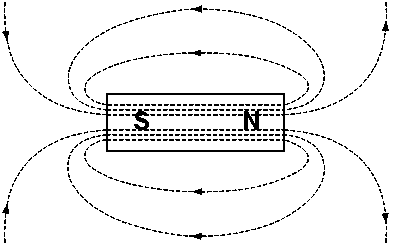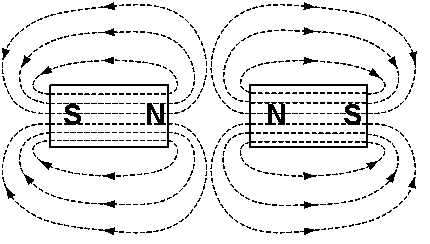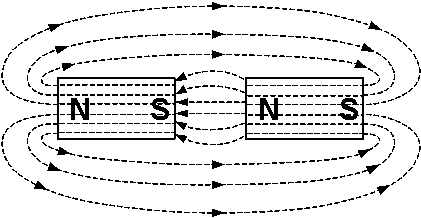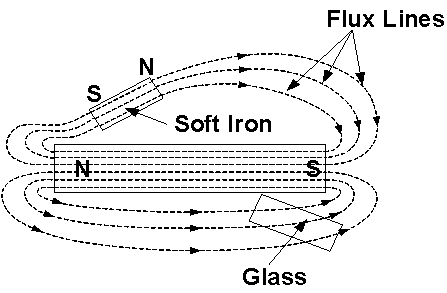The Magnet and the Magnetic Field
A Magnet is an object that produces a Magnetic Field; it can be formed of a permanent magnet or an electromagnet. The word magnet comes from the Greek "magnítis líthos", which means "Magnesian Stone". Magnesia is an area in Greece (Now Manisa, Turkey) where deposits of magnetite have been discovered since antiquity.
Magnets come in many shapes but no matter what their shapes are, each magnet has a North Pole and a South Pole.
A Magnetic Field is said to exist in a region if a (Magnetic) Force can be exerted on a Magnet. Magnetic Field Lines (Flux Lines) are imaginary lines representing the direction and strength of the Magnetic Field. They go from the North Pole to the South Pole outside the Magnet, and go from the South Pole to the North Pole inside the Magnet. The density of the Magnetic Field Lines is higher near the Poles, and the Magnetic Force is stronger there, Figure 1.
 Figure 1: The Magnetic Field created by a Magnet
Figure 1: The Magnetic Field created by a Magnet
A Magnet attracts or repels other Magnets, depending on their mutual orientation of North and South Poles.
When placing like Poles of two Magnets together, the Magnets repel each other, Figure 2.
 Figure 2: Like poles repel each other
Figure 2: Like poles repel each other
However, if opposite Poles are placed together, they attract each other, Figure 3.
 Figure 3: Opposite poles attract each other
Figure 3: Opposite poles attract each other
Aside from that, magnets attract other magnetic materials like iron, nickel and cobalt. The Magnetic Field exerts a Magnetic Force on these materials, Figure 4.
 Figure 4: Magnetic Field Lines distribution through different materials
Figure 4: Magnetic Field Lines distribution through different materials
A Compass is a navigational instrument of finding directions on the earth. It consists of a thin piece of a Magnet in needle shape, which is balanced on a nearly frictionless pivot point. The Earth Geographical North Pole is actually the Magnetic South Pole, which attracts the North Pole of the Compass, making it points north.
Links
About CMM
Contact US
Others
Other Websites
Number of Visitors:
Last Modified Date: 10/3/2025